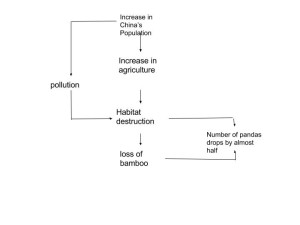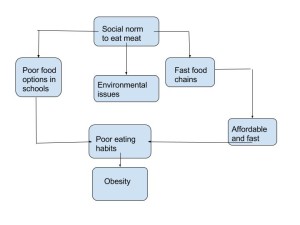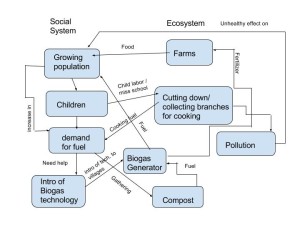The learning activity I decided to give myself was to create a system diagram of something that lead to a loss of biodiversity. Also within my learning activity I had to talk about my diagram. Finally, the last part of my learning activity was to relate biodiversity to something I’ve experienced in my life.
For the first part of my learning activity I drew a system diagram about how the expansion of china has led to the loss of pandas. Obviously, the over population in China has effected much more than just the pandas, but for my diagram I focused mainly on pandas. Pandas populations have dramatically decreased due to China’s farming practices and overgrowth. As we learned in this module biodiversity is threatened by growing human populations and consumption levels, making this a perfect example. The diagram is simple, but shows how the loss continues. As China grows they require more land. This in turn requires them to use more forests, taking the pandas habitats. Also, they’re cutting down the food supply causing it hard for pandas to survive. This has to do with acronym H.I.P.P.O. In this case habitat loss, and human population is what is affecting the pandas. In module 10 we learned that this is normally due to agriculture activities, like the ones in China. We also learned that the impacts of biodiversity fall largely on population size. This also depends on the types and amounts of resources they’re using (I=PAT). However, the overall population in China is what’s causing the species loss.
A personal experience that I’ve had with biodiversity loss was when I was interning at a state park. We had a problem with invasive species which eventually lead to a decrease in some species because they didn’t have any food. The invasive species of honey suckle took over an entire field. To get rid of it we physically had to cut it down. As we learned in this module, new species in an area competes with the other species for food. In this case the honeysuckle was winning, killing everything else. The honeysuckle didn’t just affect other plants, but also the animals. Birds were feeding on berry bushes growing in that field which were killed by the honey suckle. After the honey suckle took over we saw less birds in the area.




